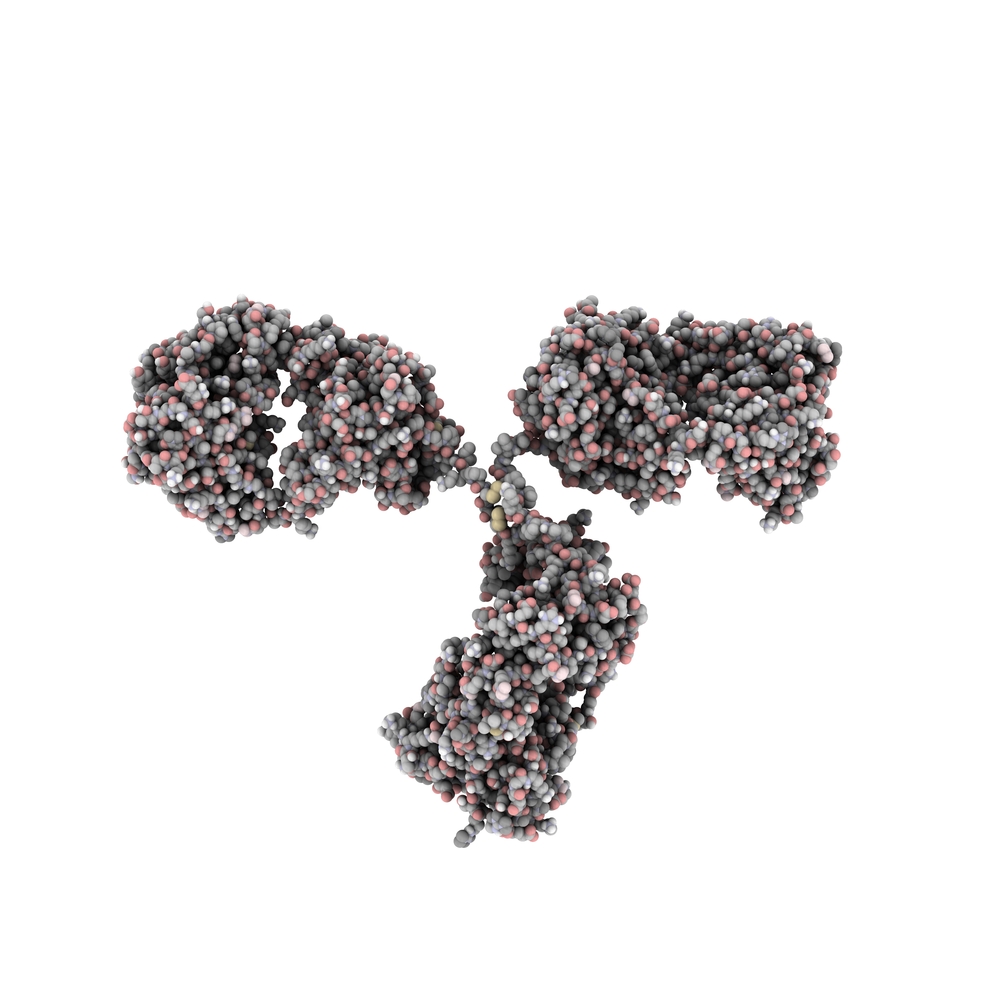MOUSE ANTI-HUMAN IMMUNODEFICIENCY VIRUS (HIV-1) P17 (1981)
Mouse anti HIV-1 p17 (clone 1981) antibody has been developed for use in ELISA and Western blot.
PRODUCT DETAILS – MOUSE ANTI-HUMAN IMMUNODEFICIENCY VIRUS (HIV-1) P17 (1981)
- Mouse anti Human Immunodeficiency Virus p17 (clone 1981).
- Specific for HIV-1 p17. Functions in ELISA and WB assay. Negative in IFA.
- Purified from ascites fluid or culture medium by protein A chromatography or sequential differential precipitations with
- Presented in 0.01 M phosphate buffered saline, pH 7.2 with 0.1% sodium azide.
BACKGROUND
Human immunodeficiency virus (HIV) is a retrovirus (genus Lentivirus) with a single-stranded, positive-sense RNA genome. Upon entry of the target cell, the viral RNA genome is converted to double-stranded DNA by a virally encoded reverse transcriptase that is present in the virus particle. This viral DNA is then integrated into the cellular DNA by a virally encoded integrase allowing the genome to be transcribed. Once the virus has infected the cell, two pathways are possible: either the virus becomes latent and the infected cell continues to function, or the virus becomes active and replicates, and a large number of virus particles are liberated to infect other cells. Infection with HIV leads to a condition in which the immune system begins to fail, leading to opportunistic infections.
The HIV-1 matrix protein p17 is a structural protein involved in most stages of the viral life cycle. It participates in the early stages of virus replication as well as in RNA targeting to the plasma membrane, incorporation of the envelope into virions and particle assembly. P17 also acts as a viral cytokine that works on preactivated, but not on resting, human T cells promoting proliferation, proinflammatory cytokines release and HIV-1 replication after binding to a cellular receptor (p17R) (Fiorentini et al., 2006). Once it is released in the extracellular space from HIV-1-infected cells it accumulates in the tissues of patients, even in those successfully treated with highly active antiretroviral therapy. Extracellular p17 then deregulates the biological functions of many different cells that are directly or indirectly implicated in AIDS pathogenesis. All p17 actions depend on interaction between its functional epitope (AT20), located at the protein N-terminal region, and different receptors expressed on target cells (Caccuri et al., 2016).
REFERENCES
- Caccuri et al. (2016). HIV-1 Matrix Protein p17 and its Receptors. Curr Drug Targets. 17(1):23-32.
- Fiorentini et al. (2006). Functions of the HIV-1 matrix protein p17.New Microbiol. 29(1):1-10.

